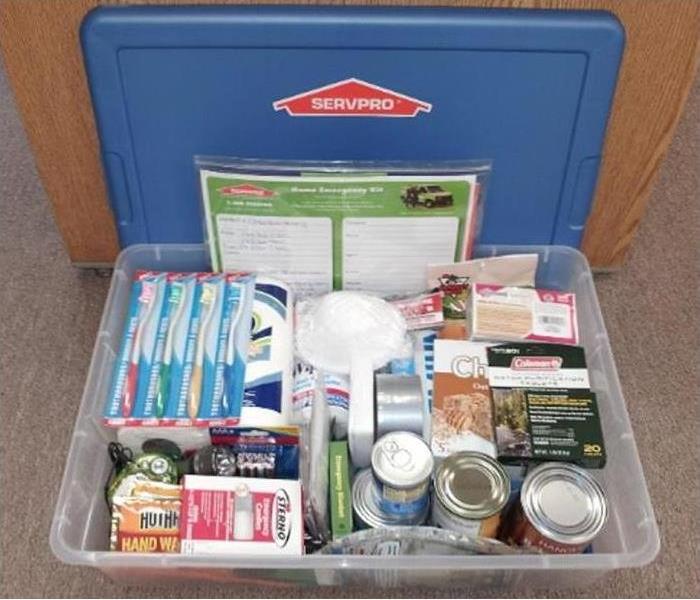Preparing For Disaster: Emergency Supply Kit
2/20/2017 (Permalink)
It is important to have basic emergency kit supplies gathered in the event of a disaster. These items should be kept separate from where you normally store them in your Hill Country home. The last thing you need in an emergency is to find out that your child used your emergency batteries to replace the dead ones in their video game controller a month ago. If you keep them separated, you will reduce the likelihood of something like this happening. While you can’t plan when a disaster happens, you can plan for a disaster. The following items are recommended to have in your emergency kit:
- Water – You should have one gallon of water per person per day for at least three days. This water will be used for not only drinking, but also sanitation (brushing teeth, washing hands, etc). If you have pets, you should have water on hand for them as well.
- Food – You should have at least a three-day supply of non-perishable food. These items can include canned fruits and vegetables, soups, crackers, nuts and seeds, and canned tuna. Don’t forget to put a can opener in your emergency kit. Again, if you have pets, you should also pack away at least three days worth of pet food for them.
- Battery-powered or hand crank radio and a weather radio with a tone alert. Be sure to have extra batteries on hand for both, if they require batteries.
- Flashlights and extra batteries for them. Not everyone will need one, necessarily, but it is a good idea to have more than just one on hand.
- First aid kit – alcohol wipes, band aids, gauze, bandage tape, disposable latex gloves, thermometer, tweezers, saline solution, aspirin, just to name a few. You can purchase pre-made first aid kits or make your own with extra supplies sitting around your Boerne home. If making your own, put them in a separate bag to prevent them from getting lost amongst your other emergency kit items and to help keep them as sterile as possible.
- A Whistle, to signal for help. Again, while you don’t need one for each person, necessarily, it might be a good idea in the event that you and your family members get separated.
- Dust masks – These will help filter the air in case it becomes contaminated. Plastic sheeting and duct tape to seal off an area in your home is also suggested.
- Moist towelettes, garbage bags and plastic ties for personal sanitation.
- Wrench or pliers to turn off your utilities with
- Cell phones with chargers, inverter or solar charger. No need to purchase an emergency cell phone; you can use the one you use everyday. But keep in mind that cell phones should be used for emergency reasons only during a disaster. This would not be the time to drain your cell phone battery playing games or scrolling through Facebook.
A couple additional emergency supplies you might want to consider keeping on hand:
- Prescription medications
- Eyeglasses and/or an extra set of contacts
- Important documents such as identification, birth certificates, bank account records, and copies of insurance policies. These should be kept in a waterproof, portable container.
- Household chlorine bleach and a medicine dropper. Bleach can used to treat water and it can also be used as a disinfectant. Do not use scented, color safe, or bleaches with added cleaners.
- Bleach as a disinfected: nine parts water to one part bleach
- Bleach to treat water: 16 drops of bleach per gallon of waterSleeping bag or warm blankets for each person. If it going to be cold, you might want to consider having extras on hand.
- Fire extinguisher
- Matches in a waterproof container
- Personal hygiene items
- Mess kits or paper cups, plates, and plastic eating utensils. If you are packing mess kits, be sure to also pack a small bottle of dishwashing liquid soap and a sponge.
- Paper and pencils
- Activities to keep you and your family occupied, such as books, games, puzzles, and coloring books
- Change of clothes and sturdy shoes. Clothing should include at least a long sleeved shirt and long pants. Extra, thicker clothing may be required if cold weather is in the forecast.





 24/7 Emergency Service
24/7 Emergency Service
